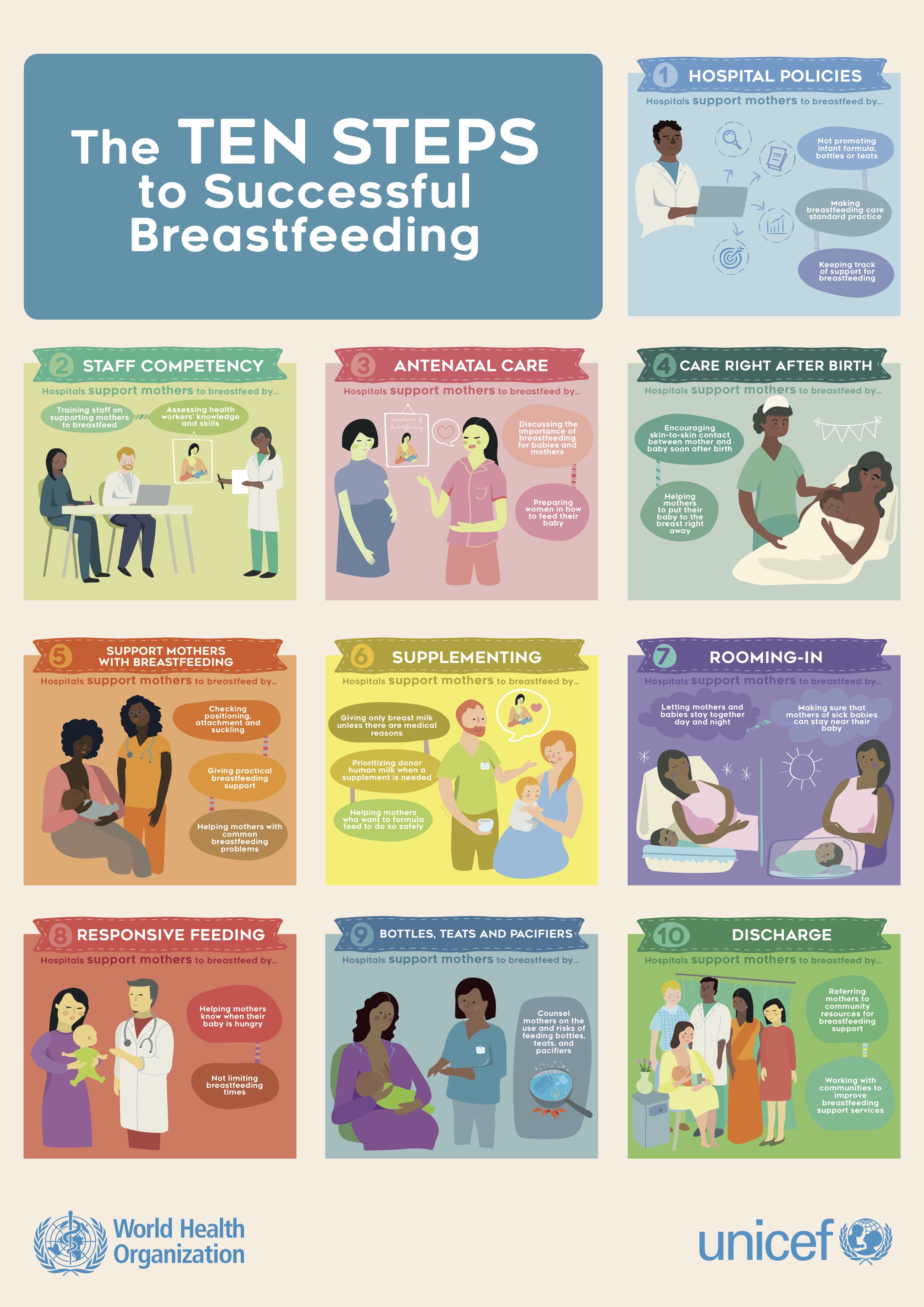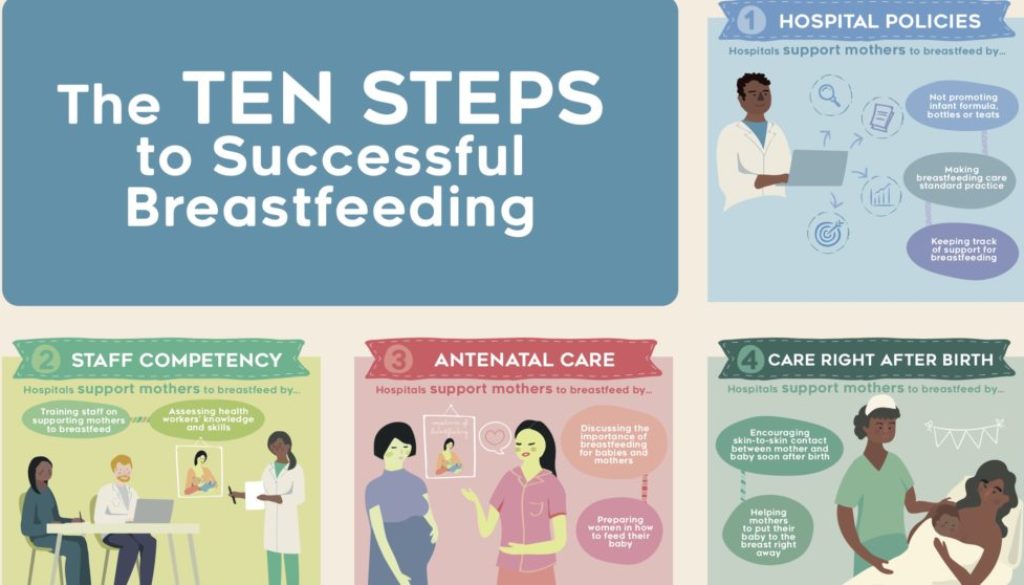WHO and UNICEF issue revised Ten Steps to Successful Breastfeeding
Last week WHO and UNICEF published an updated ten-step guide to increase support for breastfeeding in health facilities that provide maternity and newborn care. The guide is titled “Ten Steps to Successful Breastfeeding” and underpins the Baby-friendly Hospital Initiative that WHO and UNICEF published in 1991.
In its news release the UN organisations state that breastfeeding all babies for the first 2 years would save the lives of more than 820,000 children under 5 annually. When a newborn is breastfed within its first hour of life, he or she is better protected against infections and thus have a higher chance of survival compared to babies who are not given the breast. In addition, if a baby gets the opportunity to get on the breast early after birth, there is a higher chance mum and baby will continue to breastfeed for a longer period of time. Breastfeeding is not only vital to a child’s lifelong health; it has also shown to reduce costs for health facilities, families and governments. Research also shows that mothers who breastfeed lower their risk for breast- and ovarian cancer, heart disease and type 2 diabetes.
“Breastfeeding saves lives. Its benefits help keep babies healthy in their first days and last will into adulthood,”
– UNICEF Executive Director Henrietta H. Fore.
For a mother to be able to successfully breastfeed, support, encouragement and guidance is key – and that is what the new guidelines are for. The guide lays out practical steps countries should take to protect, promote and support breastfeeding in facilities in which mothers and babies are provided care. It describes how hospitals should have a written breastfeeding policy in place, staff competencies, and antenatal and post-birth care, including breastfeeding support for mothers. The guide also recommends limited use of breastmilk substitutes, 24 hour rooming-in, responsive feeding, educating parents on the use of bottles and pacifiers, and support when mothers and babies leave the hospital to go home. (1.)
The steps read as follows:
Ten Steps to Successful Breastfeeding
Critical Management Procedures
1a. Comply fully with the International Code of Marketing of Breast-milk Substitutes and relevant World Health Assembly resolutions.
1b. Have a written infant feeding policy that is routinely communicated to staff and parents.
1c. Establish ongoing monitoring and data-management systems.
2. Ensure that staff have sufficient knowledge, competence and skills to support breastfeeding.
Key Clinical Practices
3. Discuss the importance and management of breastfeeding with pregnant women and their families.
4. Facilitate immediate and uninterrupted skin-to-skin contact and support mothers to initiate breastfeeding as soon as possible after birth.
5. Support mothers to initiate and maintain breastfeeding and manage common difficulties.
6. Do not provide breastfed newborns any food or fluids other than breast milk, unless medically indicated.
7. Enable mothers and their infants to remain together and to practice rooming-in 24 hours a day.
8. Support mothers to recognize and respond to their infants’ cues for feeding.
9. Counsel mothers on the use and risks of feeding bottles, teats and pacifiers.
10. Coordinate discharge so that parents and their infants have timely access to ongoing support and care. (2)
Below is an infographic published by WHO and UNICEF to present the ten steps more in detail:

In the upcoming weeks we will publish an article about how these Ten Steps will be enacted here in Italy. Stay tuned!
Resources:
- WHO and UNICEF issue new guidance to promote breastfeeding in health facilities globally: https://www.who.int/mediacentre/news/releases/2018/promote-breastfeeding-globally/en/
- Ten steps to successful breastfeeding (revised 2018): https://www.who.int/nutrition/bfhi/ten-steps/en/
- Poster: https://www.who.int/nutrition/bfhi/bfhi-poster-A2.pdf?ua=1
